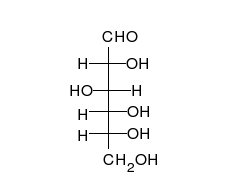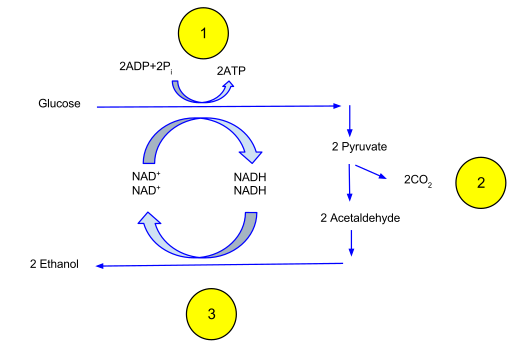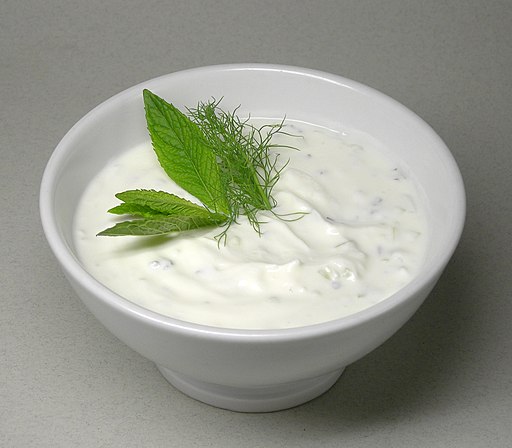- State the significance of glycolysis and respiration for the cell.
- Summarize glycolysis by
- (a) naming the molecules with which the process begins and ends,
- (b) listing the number of ATP molecules put in and the number produced,
- (c) listing the number and type of coenzymes utilized, and
- (d) indicating where in the cell the process occurs.
- Account for the maximum number of ATP molecules produced by glycolysis and respiration.
- Explain the two principal types of fermentation reactions and explain their significance for cells.
- Define anabolism and catabolism and show their relationship to the pathways of glycolysis and respiration.

Glucose is the preferred carbohydrate of cells. In solution, it can change from a linear chain to a ring.
Contents [hide]
Glycolysis
Glucose is the preferred carbohydrate of cells. Glycolysis (glyco – sugar; lysis – splitting) is a universal process of all cells that occurs in the cytosol whereby the glucose (a 6-carbon sugar) is split into two pyruvate (a 3-carbon molecule) molecules to generate ATP and reduced NADH. ATP (adenosine triphosphate) is the energy currency of the cell that stores chemical energy in 3 high energy phosphate bonds. NADH (reduced nicotinamide adenine dinucleotide) is a high energy electron carrier that acts as a coenzyme in reactions and as a rechargeable battery of sorts. The uncharged state that is not carrying high energy electrons is called NAD+.

Glycolysis is the splitting of glucose into 2 pyruvate molecules to generate 2 NADH and 2ATP molecules.

NADH is the reduced form of NAD+. The High energy electrons associated with the reduced form come with a H atom.
Fermentation
In the absence of oxygen, cells may decide to utilize the pyruvate from glycolysis to rapidly generate additional ATP molecules in a process called fermentation. Fermentation is the anaerobic process of reducing pyruvate to generate ATP. This process uses the NADH generated from glycolysis as the reducing agents. Fermentation is a familiar process that occurs in yeast to generate ethanol. In other organisms, like humans, fermentation results in the production of lactic acid. Both lactic acid and ethanol are toxic, but this aids the cells in generating ATP when energy is required rapidly. Fermentation also generates CO2 as a waste molecule as pyruvate is broken down into a 2-carbon compound.

Fermentation in yeast generates ATP in the absence of oxygen but yields little ATP at the cost of the reduced NADH. Credit: Davidcarmack (CC-BY-SA)












